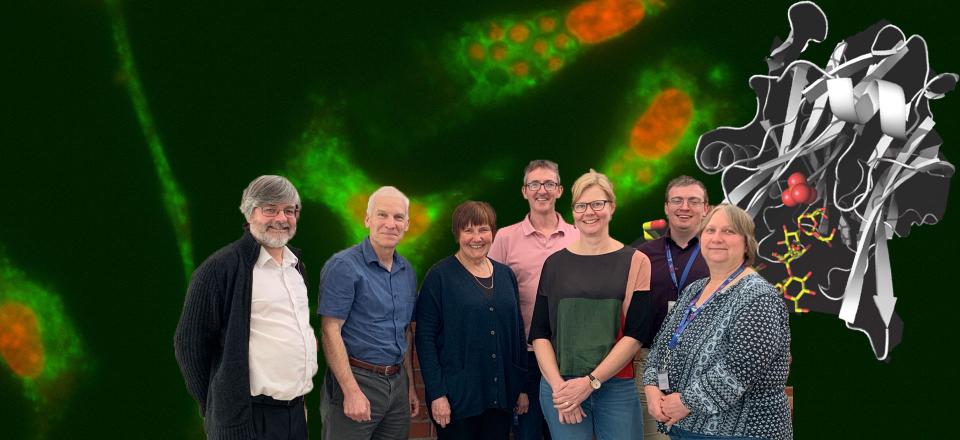Media Release: A sweet solution for a persistent parasite

11 September 2019
New research was published today [Cell Host and Microbe, 11 September] that shows how an important group of human pathogens cause disease, opening up fresh avenues for much needed therapies.
Leishmaniasis is a sandfly-borne disease caused by Leishmania parasites.
According to the World Health Organisation, there are an estimated 700 000 to 1 million new cases of this neglected tropical disease and some 26 000 to 65 000 deaths annually, with millions more people infected without symptoms. The disease is increasing in many regions of the world, including the Middle East, Africa and Central America where there are regional conflicts and breakdown in health services.
No vaccines exist and drugs to treat the disease are inadequate, often failing to kill the pathogens and commonly causing toxic side-effects.
Leishmania are able to persist for many years in their human host by hiding inside immune cells, such as macrophages. Macrophages are normally responsible for killing invading pathogens, but Leishmania are able to avoid this fate and grow stealthily within these host cells, eventually forming large ‘granuloma’ lesions that can lead to open ulcerating sores, organ damage and, in some cases, death. Many people who carry the parasite remain asymptomatic, but immunosuppressed individuals, for example those with HIV/AIDs or suffering from malnutrition, are particularly vulnerable. Until recently very little was known about how Leishmania managed to grow within these host cells and resist most antibiotics.
In this collaborative study between research groups at the University of Melbourne’s Bio21 Institute and the University of York, researchers have shown that Leishmania make an unusual carbohydrate reserve, termed mannogen, that protects them from fluctuating nutrient levels in the host.
“Leishmania are weird. While we use glycogen made from glucose as an energy store, they use a different sugar, mannose, to build mannogen. While we need glycogen to live, the parasites need mannogen to survive,” explains Professor Spencer Williams, carbohydrate chemist, who contributed to this work.
The University of Melbourne researchers have identified a new family of enzymes that use sugars scavenged from the host to make mannogen, that can then be reused by the parasite when nutrient levels are low. These versatile enzymes, called mannosyltransferase/ phosphorylases or ‘MTPs’ for short, also have a role in regulating the metabolism of these parasites and represent an entirely new enzyme class. The findings are the culmination of 10 years’ work and provide a fundamental understanding of Leishmania metabolism for the development of specific drugs.
“We believe that the evolution of mannogen synthesis in Leishmania, which first involved acquiring genes from bacteria cohabiting in their common insect vector, was critical in allowing these parasites to adapt to their animal and human hosts and colonize immune cells” explains Fleur Sernee, who together with Julie Ralton, is lead author on the publication.
“As mannogen metabolism is critical for the survival of these parasites, developing inhibitors to block the enzymes that regulate this carbohydrate store is a potential way to specifically kill Leishmania parasites,” explains Malcolm McConville.
“We can exploit the parasite’s food preference for mannogen and specifically target this metabolic pathway, without side-effects to humans.”
Bio21 researchers from the Parker group and from York University, were involved in defining the 3D structure of these enzymes. These studies allowed the researchers to map the evolution of this new enzyme family whose members acquired the ability to both make and degrade mannogen, and regulate the metabolism of these pathogens.
This knowledge is now being used to identify drug molecules that bind and block enzyme activity and may be used to develop new therapies.
“Similar enzymes and carbohydrates are made by other pathogens, such as the bacteria that cause tuberculosis, and this work may contribute to developing new classes of drugs to treat other infectious diseases,” explains Malcolm McConville.
Original Article:
A Family of Dual-Activity Glycosyltransferase-Phosphorylases Mediates Mannogen Turnover and Virulence in Leishmania Parasites
M. Fleur Sernee 6 Julie E. Ralton 6 Tracy L. Nero Spencer J. Williams Gideon J. Davies Malcolm J. McConville 7
Cell Host Microbe, VOLUME 26, ISSUE 3, P385-399.E9, SEPTEMBER 11, 2019
Media Enquiries:
Tejasvi Hari Krishna | Media and Publishing Coordinator
Media & Publishing | Strategy and Culture I Chancellery
T: +61 3 8344 2241 M: 0450 501 248 E: tejasvi.hari [at] unimelb.edu.au

